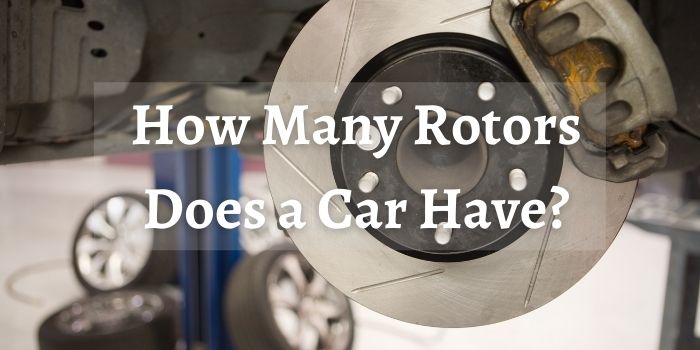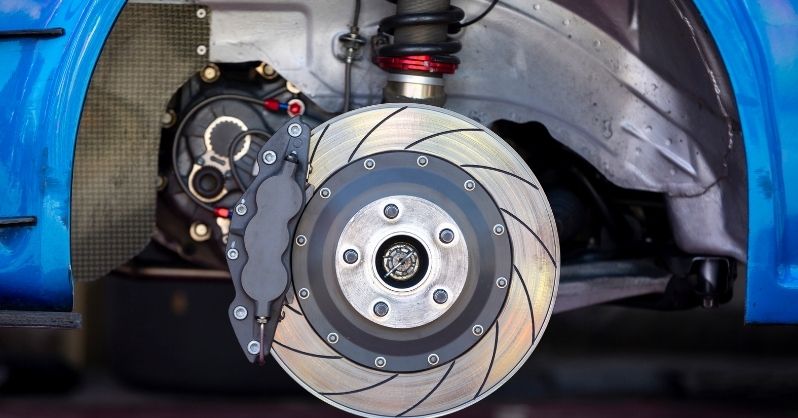The braking system of a vehicle highly depends on the rotors located on that car. If there isn’t proper harmony among the rotors, then the braking system will fail to live up to its true potential. That’s why if you want to drive safely, you need to know about brake rotors and how many rotors does a car have.
And in this article, we will provide you with all the necessary details that you need to know about brake rotors, their quantities, how they are used, and more.
So, without further ado, let’s take a look at the rotors of a car’s braking system!

What Are Rotors on a Car?
Brake rotors or more commonly known as rotors are round metal discs that are connected to the wheels or tires of a vehicle. They are the most crucial and effective part of the braking system as they ensure that the tires slow down ideally when you hit the brakes.
This happens when the calipers located in your vehicle’s brake pads are squeezed together. As the rotors start to rub against the brake pads, friction occurs. This slows down the rotation of the vehicle’s wheels, ultimately reducing the vehicle’s speed.
How Many Rotors does a Car Have?
The number of rotors that a car can have highly depends on the number of tires it can mount. Generally, there are only four rotors installed in a vehicle. But this amount changes for trucks as eight rotors can be installed for the eight tire slots.
You can’t add any extra rotors, nor can you remove one, as the number of rotors in a vehicle is permanent and can’t be changed. That is unless you want to take everything apart and build a car with six or eight tires.
What are Rotors Used For?
The main purpose of brake rotors in a car is to decrease the speed of the car’s turning wheels with the help of friction. They ensure that you can stop or reduce the speed of your car after your initial acceleration.
The working process of brake rotors is quite simple and easy to understand. When you hit the brake pedal, the rotors get to work. As soon as you press on the brakes with your feet, the brake pads and the rotors start to compress against each other.
This event happens to all the tires at the same time. And as a result of friction occurring between the brake pads and the rotors, the wheels start to slow down, and your car comes to a stop.
Keep in mind that tires’ friction with the road also plays a role when your vehicle starts to slow down. But the process is initiated and wouldn’t have reached completion without the brake rotors activating at first.
When you remove the pressure from the brake pedal, the rotors and the brake pads stop pressing against each other. So, your car begins to move and starts gaining speed gradually.
Types of Brake Rotors

As brake rotors rely on friction to make the car’s speed come to a stop, intense heat is also generated. And due to that factor, brake rotors are made of steel and comes with special modification so that the generated heat can be quickly dissipated.
Depending on this factor, brake rotors can be divided into four different types. And they are:
- Solid or Blank
- Drilled
- Slotted
- Drilled and Slotted
Solid or Blank Brake Rotors
This is the most general type of brake rotor that you can get for your vehicle. This type of brake rotor is primarily found in passenger vehicles like sedans and minivans.
They are very simplistic, which makes them budget-friendly and affordable for everyone. The blank brake rotors also come with a larger contact area for the brake pads compared to other variations of brake pads.
For this reason, they offer a slightly better braking performance than its competitors. But this also has a downside as the heat cooldown time is longer than other braking rotors like drilled or slotted rotors.
Drilled Brake Rotors
As the name suggests, drilled braking rotors are covered with holes that are drilled like a series of spiraling patterns throughout the surface of the rotors. These holes help the rotors to disseminate the heat generated from braking without harming or clogging the rotors.
This type of brake rotor is excellent for wet environments. But they can not take too much heat, and that’s why you won’t be able to find them in sports cars or racing cars.
Slotted Brake Rotors
This type of rotor is designed to take heavy loads, and that’s why slotted rotors have especially positioned spots around the exterior surface of the rotor. These slots can draw more air inside the rotor’s surface for cooling and heat reduction. You will often see them being used on trucks or heavy-duty SUVs.
But a drawback that comes with these types of rotors is that their lifespan is too short, and they often damage the braking pads as well.
Drilled and Slotted Brake Rotors
As its name suggests, this type of brake rotor utilizes the features of both drilled and slotted brake rotors. This means this brake rotor comes with a series of slots and holes across its body. It ensures that the heat generation is at a minimum.
Because the cooling and heat dissipation level are very high, you do run the risk of a small lifespan on these brake rotors.
That being said, drilled and slotted brake rotors are used on high-performing vehicles like sports and racing cars. And the owners of cars with high caliber can easily pay for a few braking rotors.
Conclusion
And there you have it. These are all the basic information that you need to know about brake rotors. Now, if you have come this far, then we are confident that you now understand what brake rotors are, how many rotors does a car have, and why they are important.
So, use this knowledge to better understand your car and good luck driving!